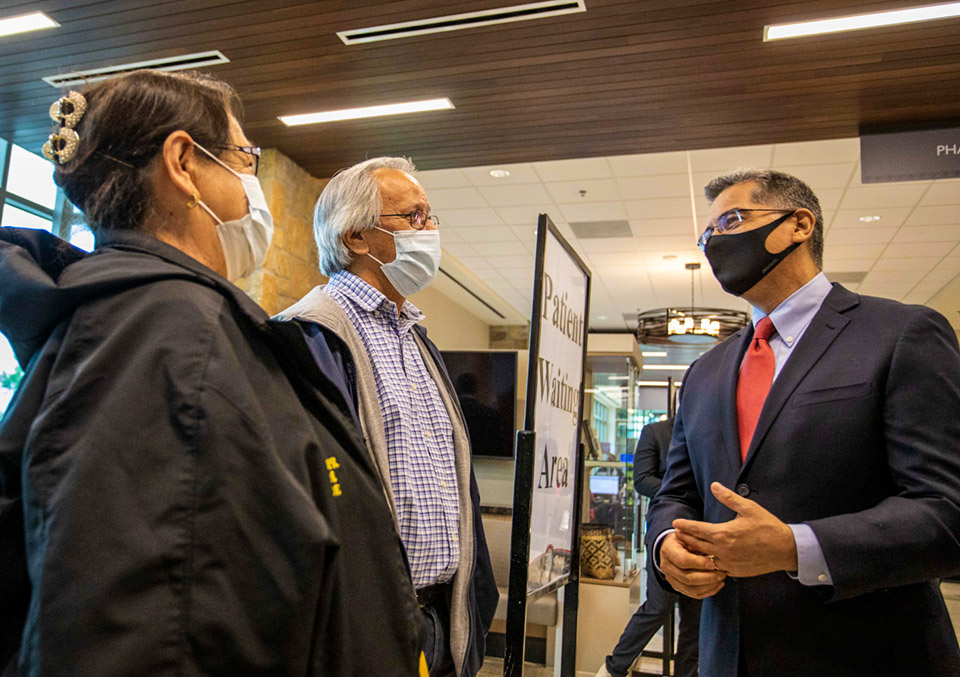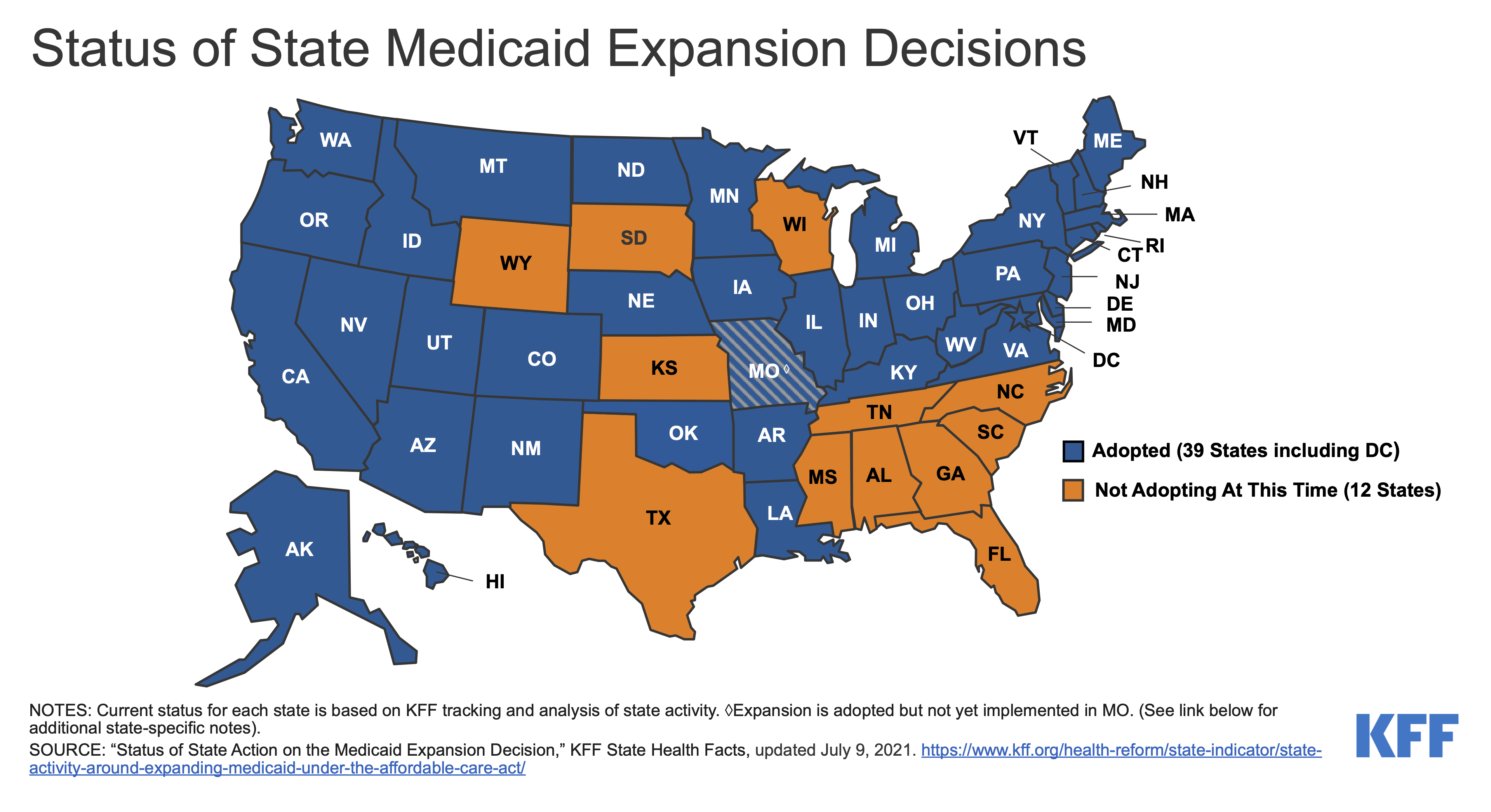Indianz.Com > News > Health care coverage improves in Indian Country amid toll of COVID-19

Health care coverage improves in Indian Country amid toll of COVID-19
Thursday, July 22, 2021
Indianz.Com
Correction:The report was issued by the Office of the Assistant Secretary for Planning and Evaluation within the Department of Health and Human Services, not by the Centers for Medicare and Medicaid Services as previously stated. An updated copy of the report is available at hhs.gov. Health insurance coverage has improved dramatically among American Indians and Alaska Natives, the Biden administration announced in a new report that highlights the disparities still being faced in tribal and urban communities. According to the Department of Health and Human Services, only 28 percent of Native Americans went uninsured as of 2018. While the rate was still the highest among all racial and ethnic groups, it represents huge progress since the Affordable Care Act (ACA) became law more than a decade ago. In between 2010 and 2018, in fact, the percentage of American Indians and Alaska Natives who went without health coverage decreased by an impressive 16 points, HHS said in the report on Thursday. The Biden administration is citing the figures as it seeks to improve insurance rates even more in the coming years. “CMS is committed to working with our tribal partners to ensure American Indians and Alaska Natives have access to the coverage they need,” Administrator Chiquita Brooks-LaSur of the Centers for Medicare and Medicaid Services told Indianz.Com. “Although American Indians and Alaska Natives can enroll year round, the HealthCare.gov Special Enrollment Period provides the opportunity to get coverage more quickly and we invite people who need coverage to sign up by August 15,” Brooks-LaSur said in encouraging people in tribal communities to explore their health insurance options.
Despite the gains, the report shows how Indian Country still has a long way to go. As of 2019, for example, health coverage among American Indians and Alaska Natives lagged significantly behind non-Hispanic Whites, Asians, African-Americans and Native Hawaiians, according to the data. Then in 2020, the coronavirus took a major toll on tribes and their citizens. American Indians and Alaska Natives have suffered the highest infection, hospitalization and death rates throughout the COVID-19 pandemic, according to the report.If you’re a provider in Indian Country and are not sure who to connect with about your #COVID19 vaccine allotment or distribution, visit https://t.co/75KhKjXtQf #CMSNativeHealth pic.twitter.com/y3tj1XScVl
— CMSGov (@CMSGov) May 11, 2021
The situation has improved in 2021, due to high COVID-19 vaccination rates among Native people. As of July 9, more than 55 percent of adult patients within the Indian Health Service have received at least one dose of the vaccine, which was highest among all racial and ethnic groups, the HHS report noted.
And according to IHS data from July 15, which is the latest available, more than 1.47 million COVID-19 vaccine doses have been administered throughout the system. That accounts for 57.3 percent of the agency’s user population.
Besides providing coverage to eligible Natives, the expansion program financially benefits the IHS, which has been chronically underfunded. According to the report, Medicaid dollars now account for the overwhelmingly majority of third-party reimbursements in the system. “Medicaid collections at IHS-operated facilities grew from $496 million in FY 2013 to $729 million in FY 2018,” the report states. “The proportion of patients with insurance at federally operated IHS facilities grew from 64 percent to 78 percent from fiscal years 2013 through 2018, and IHS facilities in states that expanded Medicaid saw the largest increases,” it continues. The growth is significant, as federally operated IHS facilities collected $1.1 billion in third-party reimbursements in fiscal year 2019. “Medicaid expansion increased the number of AI/ANs who have both access to both IHS services and Medicaid coverage, which allows IHS and Tribal health agencies to bring in additional needed revenue to provide care,” the HHS report states.Cherokee Nation recently welcomed Health and Human Services Secretary Becerra as part of Secretary’s first official visit to a tribal reservation https://t.co/cve3ckkUvh @CherokeeNation pic.twitter.com/AwG0pRZ8Jn
— Anadisgoi (@Anadisgoi) July 19, 2021
Health Insurance Coverage and Access to Care for American Indians and Alaska Natives: Current Trends and Key Challenges (July 2021) [PDF]
The Affordable Care Act and Indian Country
Search
Filed Under
Tags
More Headlines
Cronkite News: Food sovereignty movement promotes Native foods
VIDEO: Examining 50 years of the Indian Self-Determination and Education Assistance Act in Indian Country
Native America Calling: Fresh Native creativity with a new play and new television show
AUDIO: Native American Education – Examining Federal Programs at the U.S. Department of Education
VIDEO: Native American Education – Examining Federal Programs at the U.S. Department of Education
Native America Calling: Indigenous business and the unpredictable new trade landscape
Written testimony for Senate Committee on Indian Affairs hearing on Department of Education
Native America Calling: An imbalance of deadly force by police in Canada
‘Betrayal’: Indian Country slams closure of Department of Education
Witness list for House subcommittee field hearing on Indian self-determination
Senate Committee on Indian Affairs schedules hearing on Department of Education
Cronkite News: Community pays tribute to Congressman Raúl Grijalva
Press Release: Sen. Gallego (D-Arizona) protests firings at Department of Veterans Affairs
Native America Calling: The righteous rebellion of Indigenous punk rock
NAFOA: 5 Things You Need to Know this Week (March 31, 2025)
More Headlines
VIDEO: Examining 50 years of the Indian Self-Determination and Education Assistance Act in Indian Country
Native America Calling: Fresh Native creativity with a new play and new television show
AUDIO: Native American Education – Examining Federal Programs at the U.S. Department of Education
VIDEO: Native American Education – Examining Federal Programs at the U.S. Department of Education
Native America Calling: Indigenous business and the unpredictable new trade landscape
Written testimony for Senate Committee on Indian Affairs hearing on Department of Education
Native America Calling: An imbalance of deadly force by police in Canada
‘Betrayal’: Indian Country slams closure of Department of Education
Witness list for House subcommittee field hearing on Indian self-determination
Senate Committee on Indian Affairs schedules hearing on Department of Education
Cronkite News: Community pays tribute to Congressman Raúl Grijalva
Press Release: Sen. Gallego (D-Arizona) protests firings at Department of Veterans Affairs
Native America Calling: The righteous rebellion of Indigenous punk rock
NAFOA: 5 Things You Need to Know this Week (March 31, 2025)
More Headlines
